Malas: Why and How do Buddhists Use Them?
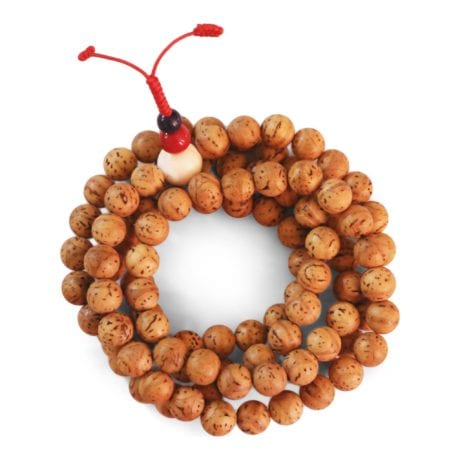
Malas are found throughout the Indian traditions. The Sanskrit word mālā means garland: flowers were traditionally strung together on a continuous loop or thread.
When we speak about Buddhist malas, we refer to strings of beads. Buddhist practitioners use them to count mantra recitations and prayers.
Traditionally, a mala contains 108 beads. We count one hundred beads as the number of recitations, and then we add eight extra beads to make up for the mantras that we may have recited incorrectly.
At the top of these malas we see three beads: white, red, and blue. In the Lama Gongdü, Guru Rinpoche explains that these three represent the three enlightened bodies of all the Buddhas. We can also say that they symbolize enlightened body, speech, and mind.
Khenpo Gyaltsen has compiled the following extensive teaching on malas in his book, A Lamp Illuminating the Path to Liberation:
An Introduction to Malas and the Commitments Connected to Them
The meaning of the word ‘mala’ (phreng ba in Tibetan) is ‘to arrange in order,’ or ‘to string many beads together one after the other to form a rosary or garland.’ The essence, or nature, of a mala is a samaya substance used for keeping count of mantras, or alternatively, one of the wisdom deity’s hand implements. Its purposes are beyond count. For instance, it helps one to attain the power of perfect recall and to swiftly accomplish the activities of pacifying, increasing, magnetizing, and subjugating.
This being so, it is taught that it is very important for practitioners endowed with samaya to keep and use a mala whose material and number of beads are in accord with the section of tantra they are practicing. This, it is taught, forms a very important auspicious condition.
Regarding malas, we can discuss them in terms of:
- material
- number of beads
- the string
- how to hold the mala
- the head bead
- the different types of counters
- the commitment
Malas: The Materials
It is taught in The Dakinis’ Secret Treasury:
For peaceful, beautify with crystal, Mother of pearl, sapphire, and conch. For increasing, use gold, silver, and ivory. Thus one will live long and enjoy good health and virtue. Coral, copper, and red sandalwood swiftly accomplish the magnetizing activities. Ruraksha, the lungtang seed, and skull bone are for subjugating, while bodhicitta is swift for all.
Malas: Number of Beads
This is explained in The Lucid Lamp of Mantra:
Regarding the number of beads on a mala, In general one hundred and eight beads are advised. Alternatively, use half that—fifty-four, Or twenty-one, or eleven…
In that way, it is taught that for peaceful practices you should use eleven beads, for increasing practices one hundred and eight, for magnetizing practices fifty-four, and for wrathful practices twenty-one.
The Mala String
It is explained that for peaceful practices, you should use three-ply string made from wool or white cotton; for increasing practices, you should use four-ply yellow cotton thread; for magnetizing practices, you should use two-ply red silk thread; and for wrathful practices, you should use nine-ply string made from leather. Regarding the color of the mala string, it is taught that you should use white string for peaceful practices, yellow for increasing, red for magnetizing, and black for wrathful.
How to Hold the Mala
It is said in the scriptures:
For peaceful, place the mala on your index finger, For increasing, on your middle finger, and for magnetizing on your ring finger. For wrathful, it is said to count the mantras on your little finger, and to rotate them away from you in reverse.
Understand these differences as they are taught.
The Head Bead
It is taught in The Lucid Lamp:
The head bead of a mala should be like this: for peaceful, white, round, and with strings entwined. For increasing, yellow and knotted, or tiered with the pattern of a stupa. For magnetizing, use a red flower. As for its shape, flat, crescent-shaped, or elongated are auspicious. For wrathful, black in color, Triangular in shape, with triangular patterns, Pointed sides, and deep holes— In short, rough and sharp. A mala for various activities should have head beads of the three kāyas, the seal of enlightened mind— Thus decorate it with beads white, red, and blue.
In this way, it is taught that the head bead should accord with the particular activity. In general, it is taught that the head bead should be of three tiers as a sign of the three vajras: on the top, a blue bead to symbolize enlightened mind, the immutable wisdom of dharmadhatu; in the middle, a red bead to symbolize vajra speech; and on the bottom a white bead to symbolize vajra body.
Alternatively, they can be explained as signs of the three kāyas that are beyond meeting and parting: the empty essence, dharmakāya on top; the luminous nature, sambhogakāya in the middle; and the all-pervasive compassion, nirmanakāya on the bottom.
Mala Counters
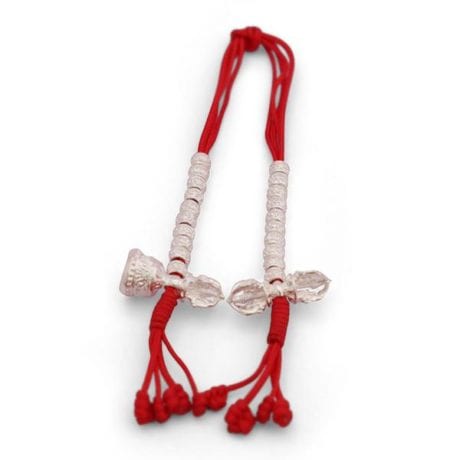
The counters are used to keep track of the number of one’s mantra recitations. They are designed as miniature malas with a vajra and bell at the end. They can be made from gold, silver, copper and the like. Regarding their shape and color, for peaceful activities they should be white and round; for increasing, yellow and square-shaped; for magnetizing, red and either flower-shaped or crescent-shaped; and for wrathful, black and triangular, as taught in the Commitments Connected to the Mala.
There are:
Root commitments
Subsidiary commitments
Root Commitment
An individual striving for liberation and enlightenment should maintain their sacred commitment (samaya) of engaging in the practice and recitation of their yidam deity. And while continuously striving for that deity’s blessings and siddhis they should keep a genuine mala on their body at all times. This is the root commitment.
Subsidiary Commitments
When reciting the essence mantra of your deity, do not use another mala. Never place your mala on the bare ground, leave it lying around, let it pass under one’s feet and so on. Do not let others touch it, and in particular keep it away from the hands of people with damaged sacred commitments, people who are obscured, or who do not share the same sacred commitments as oneself. Do not pass it excessively slowly through your hands while counting mantras.
You should not use a mala with uneven sized beads, with crooked beads, cracked beads, the wrong number of beads, beads of inferior color or shape, or malas that are of a different type or mixed. Do not wear a mala as jewelry. Do not use a mala that comes from a very negative person. Do not use your mala for calculating and other such things. Do not hold it with pretense or to show off. Do not use a mala that has not been consecrated. Do not use a genuine mala to beat dogs and other animals.
Also, if the mala string breaks you must replace it as soon as possible and not let it remain broken for more than one day. It is taught that if you keep and use a mala properly, observing these and the other related commitments, the siddhis will come swiftly.
Adapted from A Lamp Illuminating the Path to Liberation: An Explanation of Essential Topics for Dharma Students by Khenpo Gyaltsen (translated by Lhasey Lotsawa Translations, Nepal: 2014, pp. 162-168. For more information, please visit https://lhaseylotsawa.org/books/a-lamp-illuminating-the-path-to-liberation.


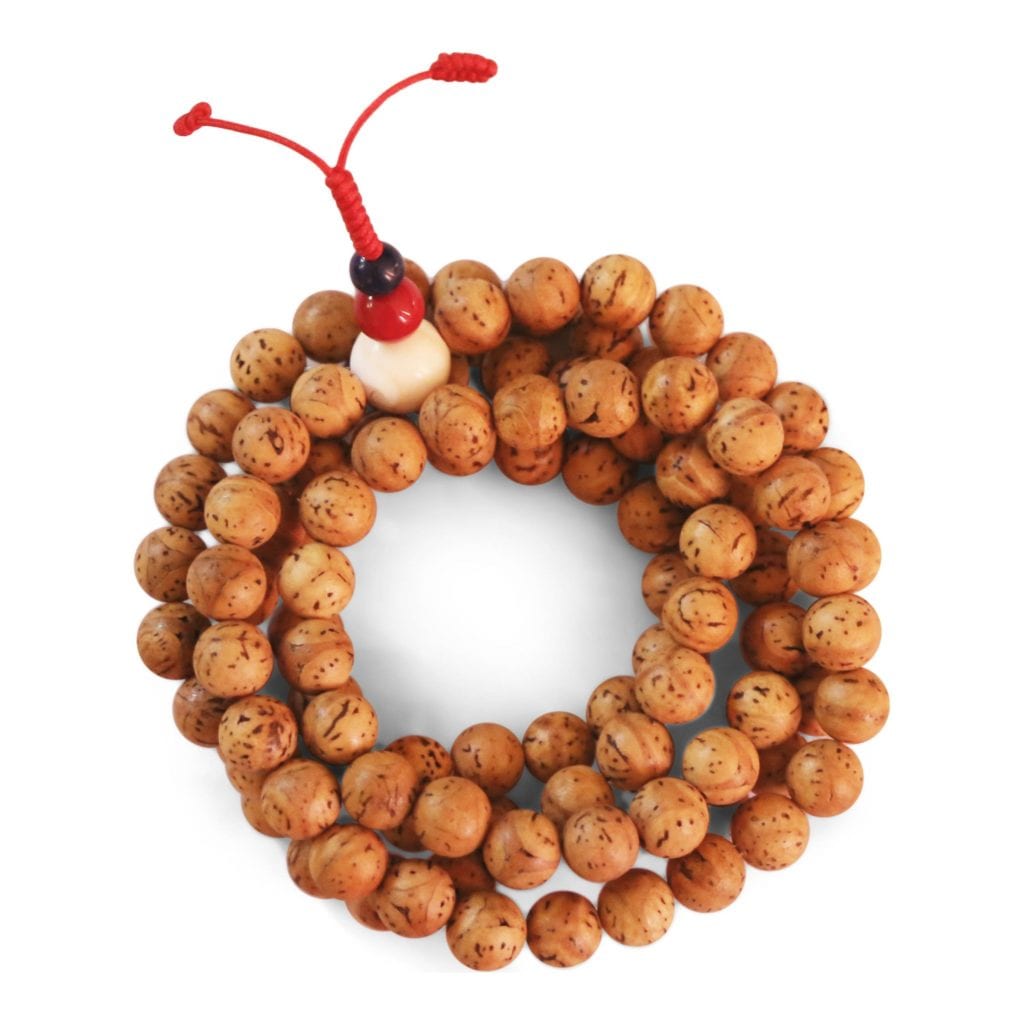



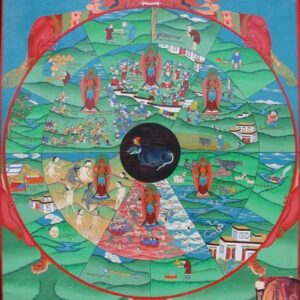

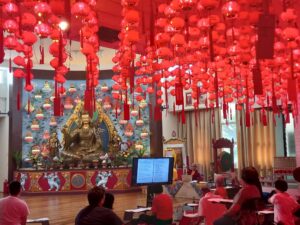

Responses